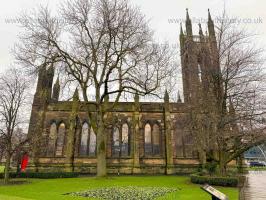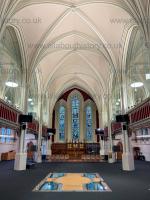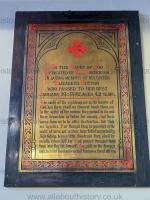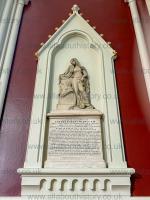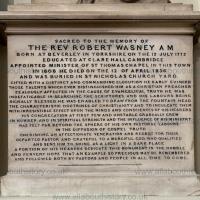Text this colour links to Pages. Text this colour links to Family Trees. Place the mouse over images to see a larger image. Click on paintings to see the painter's Biography Page. Mouse over links for a preview. Move the mouse off the painting or link to close the popup.
All About History Books
The Chronicle of Geoffrey le Baker of Swinbroke. Baker was a secular clerk from Swinbroke, now Swinbrook, an Oxfordshire village two miles east of Burford. His Chronicle describes the events of the period 1303-1356: Gaveston, Bannockburn, Boroughbridge, the murder of King Edward II, the Scottish Wars, Sluys, Crécy, the Black Death, Winchelsea and Poitiers. To quote Herbert Bruce 'it possesses a vigorous and characteristic style, and its value for particular events between 1303 and 1356 has been recognised by its editor and by subsequent writers'. The book provides remarkable detail about the events it describes. Baker's text has been augmented with hundreds of notes, including extracts from other contemporary chronicles, such as the Annales Londonienses, Annales Paulini, Murimuth, Lanercost, Avesbury, Guisborough and Froissart to enrich the reader's understanding. The translation takes as its source the 'Chronicon Galfridi le Baker de Swynebroke' published in 1889, edited by Edward Maunde Thompson. Available at Amazon in eBook and Paperback.
St Mary's Place, Newcastle upon Tyne is in Newcastle upon Tyne, Northumberland [Map].
Northumberland Fusiliers War Memorial, Newcastle upon Tyne, St Mary's Place, Tyne and Wear, North-East England, British Isles [Map]
"The Response" aka Northumberland Fusiliers War Memorial, Newcastle upon Tyne [Map] Sculpted by William Goscombe John (age 63). The memorial was inauguratred on the 5th of July, 1923, by the Prince of Wales (age 29).
A portryal of the spirit of 1914 with which Great Britain entered WWI. The memorial was given by sghip-owner and MP Sir George Renwick to commemorate the raising of the B. Coy. 9th Battalion and the 16th, 18th and 19th Service Battalions Northumberland Fusiliers.
Northumberland Fusiliers and Royal Tank Regiment War Memorial, Newcastle upon Tyne, St Mary's Place, Tyne and Wear, North-East England, British Isles [Map]
On 30th November 1924 the Northumberland Fusiliers and Royal Tank Regiment War Memorial, Newcastle upon Tyne [Map] was unveiled by the commanding officer of the Northumberland Fusiliers, Major General Sir Percival S. Wilson, and dedicated by the Rev Canon T E Crawhall, the memorial had been raised by public subscription at a cost of £3,000. The figure which represents St George slaying the dragon was designed by John W M Reid who at the time was Master of Sculpture at the nearby University of Durham's Armstrong College (now Newcastle University). The intricate detail found in the representation of St George's armour was researched by Reid during a visit to see examples of the period in the Tower of London. The sculptor of the figure was William Currie and the architects were Newcastle-based Cackett and Burns Dick. The memorial's figure is made from bronze, supported by a pedestal and screen of Portland Stone. The memorial commemorates the service of both the 6th (Territorial/City) Northumberland Fusiliers and the 43rd and 49th battalions of the Royal Tank Regiment. The latter was added after World War Two to mark an amalgamation in 1938 of the Northumberland Fusiliers with the Royal Tank Regiment. In 1938 the Fusiliers had changed from an infantry to an armoured role.
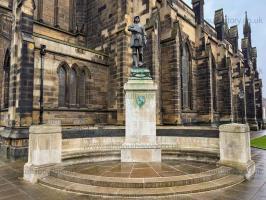
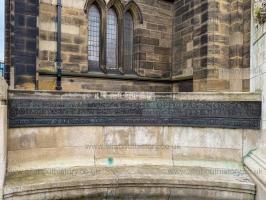
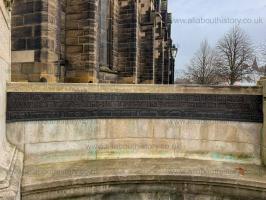
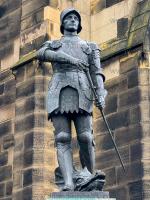
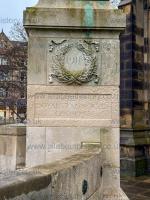
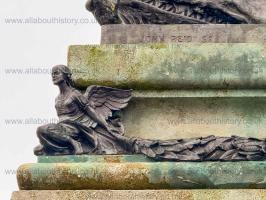
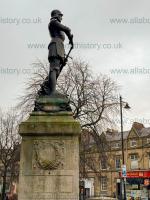
St Thomas the Martyr's Church, Newcastle upon Tyne, St Mary's Place, Tyne and Wear, Northumberland, North-East England, British Isles [Map]
St Thomas the Martyr's Church, Newcastle upon Tyne is also in Churches in Northumberland.
St Thomas the Martyr's Church, Newcastle upon Tyne [Map]. A 19th-century Anglican re-foundation of a medieval chapel, traditionally said to have been created by Hugh de Morville, one of the assassins of Thomas Becket, who, in additition to serving a period as confreres (associate brother) of the Knights Templar, elected to found a chapel dedicated to the saint as a private penance.
